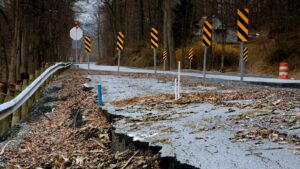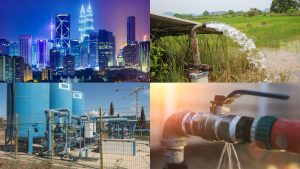In the last report published by the Office of Auditor General of Australia in 2020-21, under 52 billion litres of water supplied was lost to factors including pipe leaks and bursts. Like all other water industry assets, pipes are prone to breakages. According to studies by the insurance industry, damage caused by broken and frozen pipes rank second after damage caused by hurricanes. More than AUD 700 million is hence, spent by insurance companies for such damages annually. With the limited water supply available in the world for human purposes today, it is critical that pipe breakages in water systems do not unnecessarily waste any type of water that can be treated for reuse. Infusing smart technology into water networks is an innovative, cost-effective and expert way to find pipe breakages before it is too late.
Smart Technologies That Need To Be Incorporated into Water Systems
With the advent of industry 4.0, there has been a range of upcoming technologies that have made the work of asset managers much more effortless. Here are four crucial technologies managers in the water industry should implement to avoid or curtail the issue of pipe breakages.
Data Analytics
Advanced data analytics powered by Artificial Intelligence (AI) uses predictive and prescriptive algorithms to detect pipe leakages. Unlike regular sensors that detect a leakage when it occurs, data analytics can predict when the pipe is in a condition that may trigger a leakage. In other words, old pipes which tend to corrode or weaken with time will require maintenance consistently. The system will therefore assess the condition of the pipes and predict when maintenance is due, thereby helping asset managers take preventive measures. Through this, the life cycle of the pipe is lengthened, and the potential root cause of the leakage can be eliminated before it occurs. It moreover considers the pipe’s material, the soil’s density, weather conditions and other pipe-centric details to provide valuable insights. This means that data analytics can assess and determine possible risks according to the state of each pipe. Asset managers can tag each pipe according to its condition and schedule maintenance. The analytical tool moreover recommends what managers can do to prevent it. Where all departments of a utility sector are integrated into one platform, the analytical tool will assess the financial budget stored and provide a unique solution to solve it.
Internet of Things (IoT) Sensors
Asset managers utilise IoT sensors to monitor pipes in water systems. There are various types of sensors that carry out different forms of data. For instance, there are flow sensors, turbidity sensors, and a range of others that collectively indicate the water’s purity. Where there is a leak, soil or other contaminants enter the water system. This change can be detected through each sensor. The great thing about IoT sensors is that it provides real-time information. Hence, managers are instantly notified of any leakages or potential events that may trigger a leakage. Unlike managers who initially had to deploy an expert to monitor water assets, managers can now receive all data in seconds under one screen.
Digital Twin
The majority of the pipes in a water system are fixed underground. Hence, it is hard for humans to monitor them effectively by themselves. Where it is further hard to deploy sensors to such a region, making a digital replica of hard-to-reach assets would be beneficial. Using 4D digital twin models, managers can easily monitor and access complex pipes in the water system from a comfortable station. They can test out what-if situations and observe the simulations that occur. This gives managers, designers and engineers the flexibility to directly record how a pipe would respond to a hypothetical situation with a real possibility of it happening. By testing it out through the virtual replica, managers can take an informed decision on how pipes can be strengthened or implement mechanisms to protect them before an event that can cause pipe leakage occurs.
Satellite and GIS Maps
Asset managers have recently used satellite and GIS Maps to detect anomalies in the water industry. The high-resolution images that are taken can help experts see soil deforming. Further, radar satellite data monitors ground movements using pixel-based images. This is, therefore, a form of technology that allows asset managers to take preventive measures. It detects dynamic pipe failures and works to create a replacement prioritisation map using ArcGIS layers. Based on this, managers receive a comprehensive and detailed blueprint of the underground water system. Hence, when maintenance teams are required to go to the pipe that has the leakage, this blueprint is used to determine the fastest root to the pipe breakage. It also helps maintenance teams plan how their crews can be dispatched.
Save Existing Water With Smart Technology
Australia has struggled to consistently reduce water wasted from such leakages due to the difficulty of detecting them on time. This is why, more than ever, there is a need to incorporate innovative technologies into water systems. Ensuring all pipes are tightly fixed not only means that water will not be wasted, but it also saves water directed for reuse purposes from being contaminated. Invest in the advanced technological solutions offered by Tigernix to save the existing water supply. Whether it is the integration of the power of AI, IoT, digital twins or data analytics, you can never go wrong with their tools.







